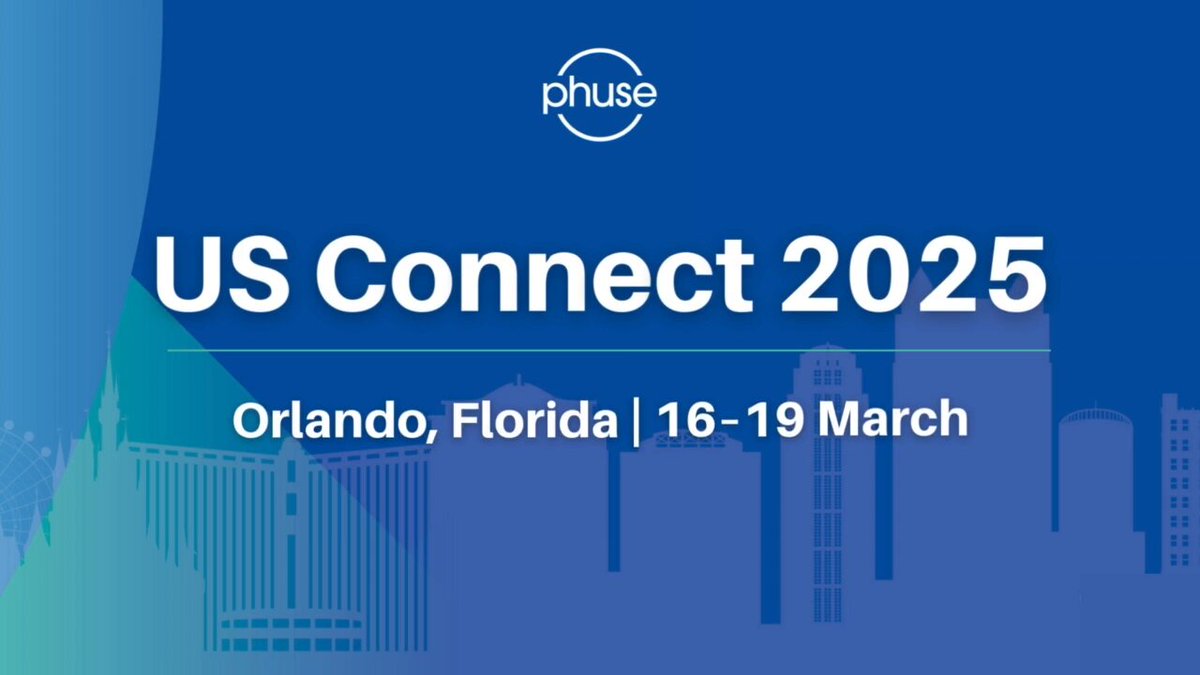
Conference: Phuse US Connect
Date: March 16-19, 2025
Location: Orlando, Florida
Booth: A
Sponsor: Platinum
Where to hear Certara insights and Expertise
Presenters: Jeffrey Abolafia, Director of Product Innovation
There is a rapid increase in the use of RWD to support marketing applications. However, submitting RWD may pose numerous challenges for regulatory reviewers in their analysis of the data. In our four previous papers, we outline these challenges and present several high-level solutions. This current paper builds on our previous work by taking a deep dive into an example CDISC SDTM submission and highlighting updates needed to the SDTM to better accommodate RWD. Specifically, we examine a subset of key domains such as Exposure, Adverse Events, Demography, and Labs. Considering how other models such as HL7 FHIR and OMOP handle certain elements, we propose new and updated data elements, core designations and business/validation rules that are needed to support RWD. These ideas are intended to help sponsors submit RWD and to start the conversation with SDOs such as CDISC around the updates needed for more efficient regulatory review.
Authors: Harish Ganesan and Sunil Mummidisetty
Presenters: Harish Ganesan, MSc, Scientist
Creating time-varying drug-drug interaction (DDI) variables is essential but often time-consuming in PKPD dataset construction. Our SAS-based standardized script automates this process, leveraging a continuously updated internal database of drug lists and potencies, curated by our DIDB clinical experts. This has led to substantial efficiency and quality gains.
Many challenges are being handled in the script, for example, names of drugs in CM or ADCM are not consistently reported (for e.g., combination of drugs can be represented using “;” or “and” or “+”), creating a challenge while searching for appropriate DDI. Each drug has a different potency, and the potency can be different when given together with other drugs. Provisions in the script are also made to dynamically change the window of induction/inhibition to consider the half-life and lag effect of a drug. We will further detail these and other challenges when presented.
Presenter: Anaya Rehman, MBBS, MSc, Senior Transparency Specialist
Creating time-varying drug-drug interaction (DDI) variables is essential but often time-consuming in PKPD dataset construction. Our SAS-based standardized script automates this process, leveraging a continuously updated internal database of drug lists and potencies, curated by our DIDB clinical experts. This has led to substantial efficiency and quality gains.
Many challenges are being handled in the script, for example, names of drugs in CM or ADCM are not consistently reported (for e.g., combination of drugs can be represented using “;” or “and” or “+”), creating a challenge while searching for appropriate DDI. Each drug has a different potency, and the potency can be different when given together with other drugs. Provisions in the script are also made to dynamically change the window of induction/inhibition to consider the half-life and lag effect of a drug. We will further detail these and other challenges when presented.
Presenter: Kristin Kelly, Senior Principal CDISC Consultant
Though the CDISC SDTM Implementation Guide provides advice on how to prepare SDTM datasets for completed studies, there is little guidance on what to do when the study is ongoing, leading to varied implementation practices across the industry. At times, it may be difficult for a regulatory reviewer to readily determine that a study is still in progress without looking in the Clinical Study Data Reviewer’s Guide (cSDRG). The recent addition of the ONGOSIND (Ongoing Study Indicator) parameter in the FDA Study Data Technical Conformance Guide (sdTCG) allows sponsors to clearly specify within the data whether a study is ongoing. In this paper, some considerations for preparing domains such as Demographics (DM), Disposition (DS), and Trial Summary (TS) for an ongoing study as well as strategies to ensure data transparency across the SDTM submission package will be discussed.
Julie Ann Hood, Principal CDISC Consultant, and Jennifer Manzi, Senior CDISC Consultant
Selecting players armed with unique abilities to collaborate is key to crafting an unbeatable strategy, whether on the field, navigating a quest, or in the office. In standardized clinical trial data, this can break down departmental silos and enhance study data quality, leading to more effective treatments sooner. Historically, SDTM programmers handled validation report issues, but some rules require tracing SDTM data back to raw data or data collection to optimize decision-making. Integrating data managers can slash resolution time and boost data quality. This poster will provide guidance on weaving data managers into the SDTM validation process and unveil different workflows to level up your approach to resolving validation issues. Curating appropriate FDA validation rules will showcase how these are best served by the unique positioning of data managers. Lastly, suggested training and ideas to power-up your data managers will equip you to battle issues and conquer those data demons.
Honz Slipka, MSc, Sr. Transparency Specialist, Clinical Disclosure
Most new drugs coming to market are required to publicly disclose the clinical trials leading up to their marketing authorization. As a result of this public disclosure, clinical trials must be anonymized to protect both personal and commercially sensitive data. While this is a small part of the end-to end process of getting drugs to patients, clinical data protection is a critically important, labor-intensive, and often bottle-necking process. Pharmaceutical companies are turning towards AI-leveraging software that enables automated identification of protected personal data (PPD) or commercially confidential information (CCI). The evolution in the way data is identified and anonymized has forced positive shifts towards lean authoring, terminology harmonization, and establishing sensitive data libraries. This presentation will cover small changes that can be implemented to clinical research, and how they cascade into large, impactful outcomes that optimize efficient clinical data protection using emerging AI tools.
Resources
Data standardization and validation
- A quick guide to implementing a CMDR
- What Should a Clinical Metadata Repository Do?
- Dreaming big with standardization in clinical trial design – one biopharma’s metadata automation journey
- How a top 10 pharma fought the rising tide of non-CRF data
- Higher Standards: Achieving Cleaner Data, Faster, from Protocol to Submission
PK/PD analysis and reporting automation
Meet us there
Our experts can’t wait to speak to you in Orlando. Help us come prepared. Submit the short form below so we can coordinate a best time and date with you.





